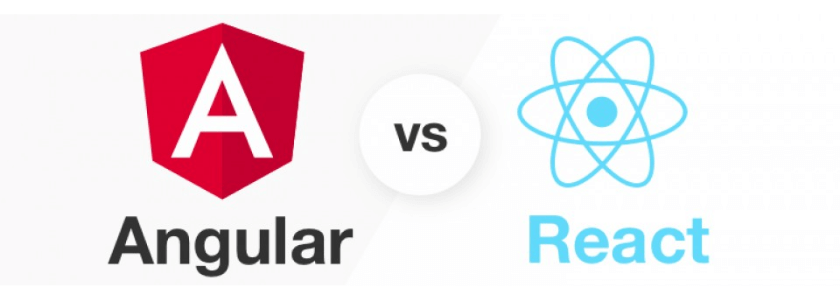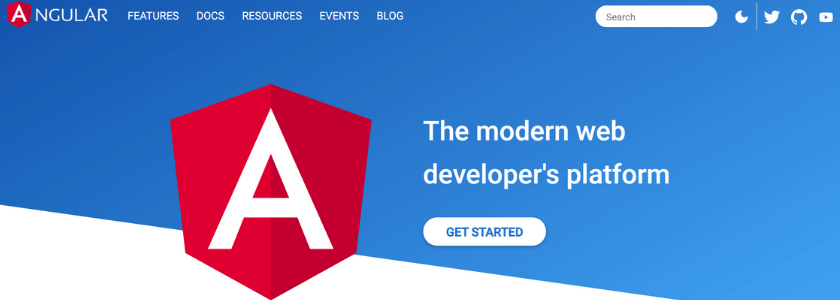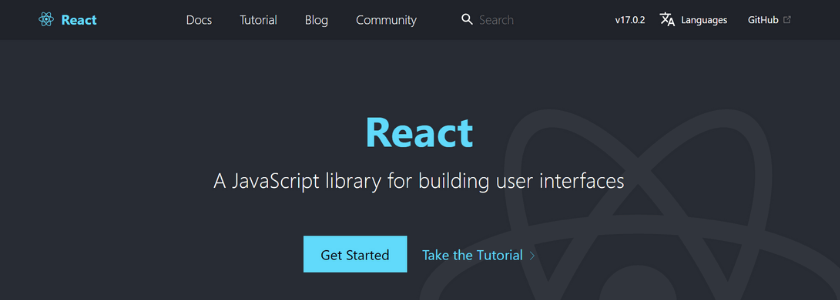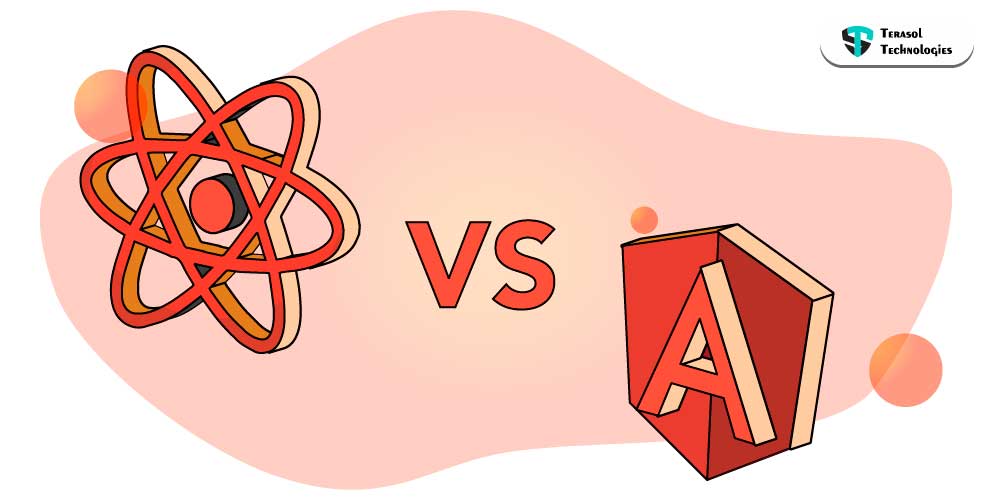React vs Angular: 5 Important Differences Between These Frameworks
We have already discussed the backend development frameworks, so here we talk about- React vs Angular, which one is a better front-end development framework for your business in 2022. These two are the most used among the javascript frameworks by web application development companies to develop applications. Let's see a deeper insight on React vs Angular with the 5 most important differences between them.
What is Angular Framework?
Angular is a structural front-end development framework for web applications. It is an open-source, dynamic, and fully-featured front-end framework, which has everything for developers to build scalable applications. Here Angular refers to the newest version Angular 2 is built on Typescript and is developed by Google.
The angular framework offers a framework for client-side Model View Controller (MVC) and Model View View-Model (MVVM) architectures, as well as components typically used in large online applications, it aids in the creation and testing of such systems.
Features of Angular
- AJAX, HTTP, and Observables are all built-in.
- In line with current technologies.
- Typescript is time-saving and efficient.
- It offers coding that is more clear and concise.
- Advance support to handle errors.
- Using Angular CLI, we can have seamless updates
- It provides a smooth, structured, and organized framework.
A few popular projects with the Angular framework are:
- Forbes
- Microsoft Office Home
- BMW
- Xbox
What is React Framework?
React framework is also an open-source JavaScript library that can be used to create user interfaces for any application and is developed by Facebook. Data is rendered to the Document Object Model using ReactJS (DOM). ReactJs is also used to create native-rendered apps as well as mobile applications.
The React Library breaks down a webpage into individual components, making interface creation easier. Additional libraries and a router are the most fundamental requirements for ReactJS.
Features of ReactJS
- Allows you to utilize libraries from other people.
- One-directional data binding allows for faster development and code stability. One can reuse the components of ReactJS.
- Simplicity and composability save time.
- It has improved user experience and lightning-fast speed.
- React framework uses JFX syntax extension, which is easy to create.
- ReactJS has a good performance. It's because it's in charge of a virtual DOM. When we write virtual components, they become DOM elements, resulting in smoother and quicker performance.
The most popular projects with ReactJs Framework are:
- Netflix
- BMI calculator
- Course learning Page

Let's Compare: React vs Angular
1. Performance
- Both are great front-end development frameworks for building large applications. MVC (Model View Controller) is the foundation of Angular and real DOM for Angular 2, whereas Virtual DOM is the foundation of React.
- This results in much faster updates in React as we don't have to rewrite the HTML, on the other hand, for a single update in the Angular framework, we have to rewrite the whole HTML. Thus, react is much faster in performance the Angular.
- The React updates are smoother, and migration is easy as we see in Facebook, and the API scripts move from older to newer ones easily. Angular framework updates every six months and is rolled as a bundle to ease the process of updating.
2. Usage and Flexibility
- Angular is a framework for building dynamic online projects, whereas React is a javascript library for creating user interface components.
- React framework requires a set of tools to perform different types of testing, whereas Angular framework provides testing and debugging for an entire project with a single tool.
- When it comes to flexibility, developers may pick from a variety of external tools, frameworks, and architectures while working with React to create highly personalized applications. Angular does not offer the same level of flexibility as React when it comes to external libraries as Angular has an extensive library within.
- The angular framework does not enable you to include a javascript library in your source code, but React allows you to do so.
3. Data Binding
Data binding is the process of syncing data between business logic and the user interface.
- Angular 2 differs from React.js in that it employs both one-way and two-way data binding: changing data affects view, and changing view causes data changes.
- The Angular framework employs a two-way binding technique, which instantly updates the model state when the UI element is changed, and vice versa.
- A one-way method is used by the React library. This method allows UI components to be changed only after the model state has been changed.
4. Architecture Of Components
Comparing React vs Angular framework, in general, have a strong ecosystem. React is simpler to comprehend, but it requires numerous integrations, such as Redux, to use its capabilities efficiently.
- Angular is a fully-featured framework in itself with many other integrations and unique features like Angular CLI, Angular Lifecycle, RxJS.
- Whereas, React framework uses a component-based approach to UI development. Say you create components that handle their state and then group them to create more sophisticated UIs. React developers will need a lot of externals integration and routers like Babel and Webpack.
5. Community support and backward compatibility
- There is widespread support and dependability in the community for both framework. But while comparing, React vs Angular, on GitHub and NPM, React is more popular and widely used among developers. However, according to research by Stack Overflow, Angular is more popular.
- Because of the Virtual DOM implementation, React has a bigger community of developers. The apps may be updated and rendered quicker than Angular apps because of the Virtual DOM.
- Angular, on the other hand, has been endorsed by Google, and is widely used in its programs, such as Google Adwords.
- When we talk about backward compatibility, React framework is more compatible as we can add or update the different versions of libraries, whereas in Angular Framework, Angular 2 is compatible with angular 4 and beyond but not below it and the updates need to be installed one by one.
Advantages of Angular Framework

- For developing an application, there is no need for developers to wait for a longer testing time. Also, Angular comes with real-time and in-built modules that support in-depth and functional testing for every module you build.
- It uses a simple MVC (Model View Controller) architecture for web application advancements.
- The framework is extensively used in native-like mobile applications, in addition to delivering cost-effective Angular progressive web app solutions that can operate across mobile devices.
- The variety of Angular features, such as template syntax, Angular CLI, routers, and others, makes programming easier and allows for faster application loading.
- Because of the technological benefits like detailed documentation, google support, differential loading, two-way binding provided by the Angular framework, Angular web applications are quicker and more efficient.
Disadvantages of Angular:
- When pages have interactive features, Angular might become sluggish.
- Integration with third parties is quite challenging.
- Several difficulties may arise while upgrading from previous versions to newer versions.
- Pages of websites and apps built with the framework may take a long time to render in the browser.
- The learning curve is steep. To a new developer of MVC architecture, this might be confusing.
Advantages of React Framework

- The HTML-like syntax enables templating as well as extensive documentation.
- While using Angular, developers spend more time creating contemporary and less time thinking about framework-specific code.
- Improve server-side rendering functionality, giving it a more robust foundation for content-focused apps.
- React allows you to migrate between versions and libraries easily. The skill of React may transfer to Native app development.
- Facebook has a function called "code mod" that automates a lot of the process.
- ReactJS is ideal for managing large loads easily when used with ES6/7.
Disadvantages of React:
- Integrating Reacts with a conventional MVC framework like Rail requires a lot of setups.
- The developers don't have time to write good documentation because there are so many changes and frequent updates.
- Only the UI Layers of the app are covered by ReactJS. As a result, you'll need some additional tools to complete the rest of the application process.
React vs Angular: Which one to choose?

Angular Framework
There are many benefits of the Angular framework, to use it to its best potential, you should when to choose Angular as your framework for front-end development.
- When creating a large-scale application with a variety of features, you should use the Angular framework. It provides you with a secure and scalable foundation
- Angular is also easier to work with for TypeScript-savvy teams.
- Your staff will undoubtedly need to be familiar with languages such as C#, Java, and earlier versions of Angular.
- Angular is best suited for projects with a low to medium level of complexity. It is ideal for featured rich and large-scale applications.
- Angular is the way to go if your team needs to use Bundle Budgets via the CLI option. It enables developers to set a size restriction for their program.
React Framework
Just like Angular, to use it to its best capabilities you should know the following.
- Reacts makes it simple to create single-page and cross-platform applications.
- React has enabled developers to create lightweight applications with contemporary features in a short amount of time.
- HTML, CSS, and JavaScript should all be familiar to your staff.
- The tasks you take on for app development need a highly personalized application solution.
- Ideal for the development of web or native-rendered apps for Android and iOS devices.
Even after the debate of React vs Angular, you want a winner, then it will be React. React has a slight edge over Angular due to ease in adaptation and customization. Also, the community support of React is larger which is crucial for new developers.
Regardless of whether it's building a lovely pristine website or updating/redesigning a current site, our software development company can help you with the front-end development of your web or mobile application. Get in touch now.


